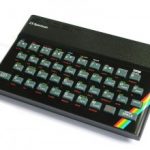ISO9001:2015 and ISO14001:2015
Leave your thoughtsColourServe Ltd is now accredited to the latest version of ISO9001 & 14001
Just some stuff…
Leave your thoughtsWhat is colour? Isaac Newton described how the “inflexion” of light caused different colours to be produced in his Opticks work of 1704, describing 7 different colours in a circle. In reality, the human eye can detect approximately 100 different hues, hence the Munsell system is based on this number. The real magic of colour, though is that we all only see with our own eyes; we can never literally “see” through another’s eyes, so colour is by definition impossible to measure in the truest sense of the word. “All colours will agree in the dark” Francis Bacon Without light,...

When is a spectrum not a spectrum?
Leave your thoughtsThere are 7 colours in the spectrum because of Newton’s book, Optics. He chose the 7 colours (red, orange, yellow, green, blue, indigo, violet) out of a belief that that there was a connection between the colours, the days of the week and the musical notes (proposed by Greek teachers). However, some claim there are in fact 6 colours in the spectrum due to the fact indigo and violet are so close to each other.
The moon is essentially grey… no colour
Leave your thoughtsThis quote from astronaut Jim Lovell on board Apollo 8 was rather a stark reminder of the reality of space. No colour. We are so used to the colour of life on earth, the words Lovell spoke when first seeing the moon close up highlighted the truth that without light there is no colour and as the moon only reflects about 13 percent of light from the sun it is, in reality not colourful. …or made of green cheese What colour is the moon – The Independent
Basics of Colour Matching
Leave your thoughtsHere at ColourServe we are aware that there are many outside influences that can interfere with the colour matching process. As part of our commitment to top quality service and support we will provide a weekly update on the the basics of colour matching, starting with the all important Viewing Cabinet. Correct Method of Viewing Colour Samples: 1. Light source. Standardise on a light source suited to the environment in which the finished products is to be seen e.g. D65 (daylight). Make sure only this reference light is used for communicating colour and matching colour, although others can...
Blue for you?
Leave your thoughtsHere is a great post on Munsell Color Blog about colour control and the challenges therein within the dyeing and specifically indigo dyeing industries. Denim jeans are notoriously difficult to measure in terms of colour; perhaps the reason so many people love them is because the colour and textures vary so much, but there has to be a degree of control in such a large scale production environment. The most interesting comment in the post is that about the lack of understanding in textiles industries as regards colour. Although many large companies in this huge industry spend a fortune on...
Fastest colours: thanks to Trimite
Leave your thoughtsThe 4th October 2013 was the 30th anniversary of Richard Noble’s land speed record with Thrust 2 at a speed of 633.468 mph. Worthy of mention in it’s own right, but for us particularly as our good customer Trimite Global Coatings was a main sponsor and one of the so-called “super seven” sponsors who came to Noble’s aid at the eleventh hour with additional funds to keep the attempt alive. Image thanks to Bloodhound Project
Colour and mathematics
Leave your thoughtsAlthough not specifically about colour, this post is a fascinating example of the link between colour science and mathematics. The four colour theorem uses colour to illustrate a maths topic visually. Interestingly, colour science works the other way around, using mathematical equation to quantify colour. One may argue colour is not an exact science in certain applications, and indeed this is so. However, the maths behind colour science allows one to use a combination of data and visual assessment to reach a reasonable conclusion. Most important, the four colour theorem makes one think laterally: colour = maths, maths = colour,...
In-line colour measurement
Leave your thoughtsPosted here on fibre2fashion.com is news that Konica Minolta is releasing a new in-line colour management system called NC-1. We have been discussing in-line measurement and control with another company recently, particularly the commercial value of such systems. The problem seems to be that the substantial cost is not outweighed by the productivity benefits in their industry. The coatings and paint industry has long striven to avoid lengthy runs of pipe work over which variance in colour can occur – the obvious driver for an in-line measurement system. In-line measurement is the logical best way to measure colour consistency and...
Next-gen architectural colour coatings?
Leave your thoughtsnext-gen coatings Is a revolution in architectural coatings just around the corner or is this technology from Nanotech Inc years away in reality? In this post on Marketwatch the suggestion is that this is a commercial product already, but how ready is the market for it? From a colour point of view, we find it exciting because it offers a wide range, without compromise on performance, or so it appears. How stable the colour will be in architectural applications in terms of the use of tint kits to colour after market, we wonder…


